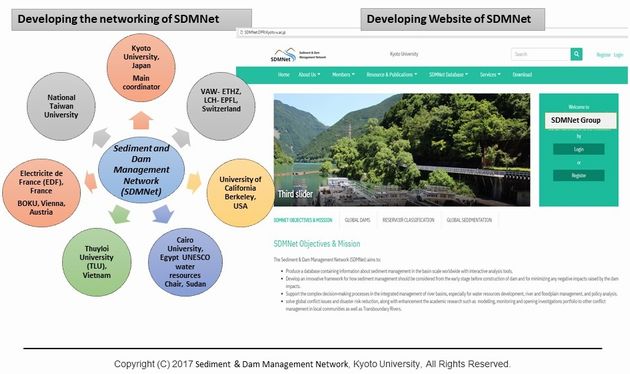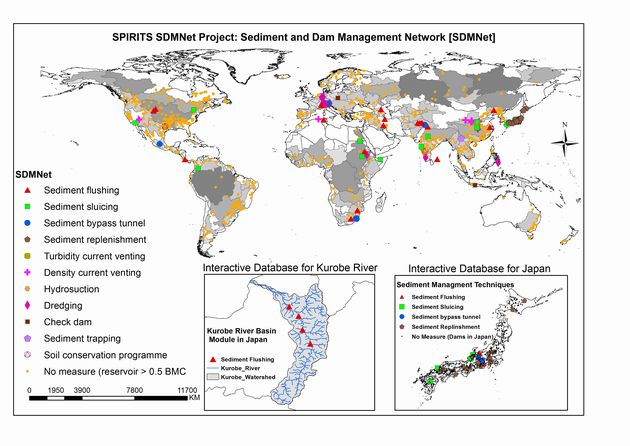Networking of Reservoir Sediment Management Groups for Sustainable Water Resources Management (SDMNet)
Project Gist
Towards establishing international interactive database and interdisciplinary research network for Sediment and Dam Management (SDMNet) in the river basin scale.
Keywords
Interactive database, Dam impacts, Reservoir sedimentation, Sediment management techniques, River basin management
Background and Purpose
Sediment and Dam Management Network (SDMNet) is an international database and interdisciplinary research network aimed at promoting sustainable water resources management and healthy aquatic ecosystems in river basins. SDMNet database is important as still today most dams are designed and implemented without consideration for sediment management techniques from the early stages; only very few dams are performing integrated sediment management techniques. Based on GIS-technology and fitted with analysis tools such as interactive maps, this tool aims to help future design as well as retrofitting and operation management of existing dams, by providing examples of both successful and unsuccessful sediment management at the basin scale. The database will help in the complex decision-making processes in the integrated management of river basins, in local communities as well as Transboundary Rivers. Moreover, modelers are in need for a detailed database at the basin scale for upgrading their models and achieve more detailed simulations for future sediment management techniques. Finally, various case studies are presented as a first contribution to the newly developed database.
Project Achievements
In collaborative effort between researchers at Kyoto University and ETH Zurich, the databases and other kind of initiatives related with dams, sedimentation and sediment management were reviewed and compared. We conducted field measurements in the Vietnamese Mekong Delta (VMD) and collected historical data of flow and sediment along the Mekong River Basin. The impacts of upstream dams on sediment budget and salinity in VMD were clarified. We developed an interactive database containing information about reservoir sediment-management at the river basin scale worldwide (www.SDMNet.DPRI.Kyoto-u.ac.jp). The website provides details about the project, data availability, developed modules, and interactive analysis tools. SDMNet database architecture was constructed, which is composed of four major building blocks including geographical location, hydrological, sediment management techniques and data series entities. Finally, a case study was investigated to both review the developed database structure and provide a first content in the form of a river basin with complete information.
Future Prospects
Our short-term goal is to strengthen the developed network, enhance the developed interactive database and organize symposia related to sustainable sediment management. We will also establish a Center of Excellence in Kyoto University for sediment and dam management networking. The new center would have a mandate to develop innovative management techniques in reservoirs and effective design manual, that consider dam and sediment management. This center is to lead the academic research through solving the Eco-Socio problems related to dam impacts and help young researchers to work in such new emerging fields to sustain both functionality and safety of aging dams.
Figure


Principal Investigator

・KANTOUSH Sameh
・Water Resources Research Center/ Disaster Prevention Research Institute
・Dr. KANTOUSH is an Associate Professor at DPRI, Kyoto University. He received his Master’s and Doctorate degrees in civil and environmental engineering from Saga University in Japan and the Swiss Federal Institute of Technology Lausanne (EPFL) in Switzerland, respectively. His research interests span the fundamentals of shallow flow and sediment transport, dam impacts and sediment management techniques to achieve sustainability in reservoirs, and Transboundary Rivers.
http://www.dpri.kyoto-u.ac.jp/member_en/4173/
